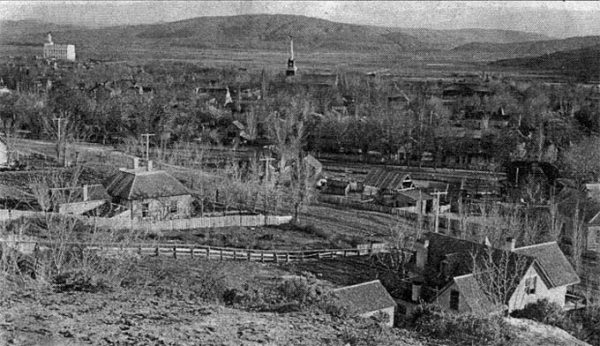
A year ago, I wrote about the development of the Little Valley area of St. George in southwest Utah. What I tried to do in that piece was use words, pictures and numbers to provide a specific example of what happens when good intentions and visionary land use plans are overwhelmed, as they usually are, by the dual pressures of industrial tourism and amenity in-migration, on the one side, and recalcitrant NIMBYism, on the other.
That piece was meant to be a case study pushing out on my running argument that the relatively recent phenomenon of permanent tourism is turning the ordinary, historical understanding of cities-as-labor-markets on its head. And to show, in effect, that it is almost certainly technocratic wishcasting to think that Good Planning will save a place from the cataclysmic money that is rushing into parts of Utah’s canyon country.
That essay was written in the Before Times and so it may be worth checking in to see what, if anything, has changed in the St. George area in the intervening year. What follows may also count as a partial reply to a comment left by reader Chris Patterson to that earlier piece:
What do people do for work in St George? I’m curious what all the new migrants do to pay for those 400k+ homes.
And what is the water source for this clearly water-intensive form of development?
And at what point will “amenity migration” stop because the amenities are ruined?
Thanks for an informative, and depressing, article. I wonder when this ideal of the over-large home on the plot of irrigated grass will finally just die out…
— — —
First, let’s briefly return to Alain Bertaud’s observation that across history, human beings have established or migrated to cities almost exclusively in pursuit of economic opportunity. For their part, firms have either emerged from, or relocated to, particular cities for the same reasons. This is the cities-as-labor-markets premise I mentioned above.
You can certainly see a shadow of this conceptual model across Greater Zion, but with a revealing twist. Even before the Recreation-Industrial Complex had really commodified the landscape itself as a sexy, saleable amenity, southwest Utah’s mild winter weather was attracting retirees and “pretirees” to the region. We didn’t really think of them in such terms at the time, but these so-called snowbirds constituted the first wave of modern-day amenity migration. This demographic group remains a significant driver of growth in the St. George area.
Among this population, the caliber of readily available healthcare is a central consideration and this would have been a significant limiting constraint during the early days of St. George’s growth spurt in the 1980s. But this is also a relatively easily solved problem: a town where older people become concentrated will tend to attract a greater supply of healthcare than a town of comparable size with a younger age distribution, and this is exactly what has happened in St. George.
Each time the supply of medical services has become thicker or more specialized, marginally more elderly people have felt comfortable putting down stakes in the area, and this in turn has attracted another round of investment in medical care. By now, this process has been rinsed and repeated enough times that there are almost no health care needs that cannot be very well met locally; healthcare has gone from being an obstacle to a draw for prospective move-ins.

Unpacking this precipitating cause of growth and its consequences exposes the ways in which the region both resembles and departs from the city-as-labor-market hypothesis. Each new physician to set up shop in St. George moves here at least in part to pursue economic opportunity. In turn, each new physician essentially comprises a small economy of their own: each doctor employs considerable support staff and the entire sector consists of consumers employing their pro rata share of the area’s workers in, say, retail and government. Providing an ever-expanding supply of healthcare and shelter to retirees also requires a great deal of building, which employs both blue-collar tradespeople and white-collar FIRE types. In this way, St. George does function as a fairly conventional labor market.
Still, the trigger for all this localized economic activity has been the steady flow of imported retirement money, both private in the form of personal savings, and also public in the form of Social Security and Medicare dollars.
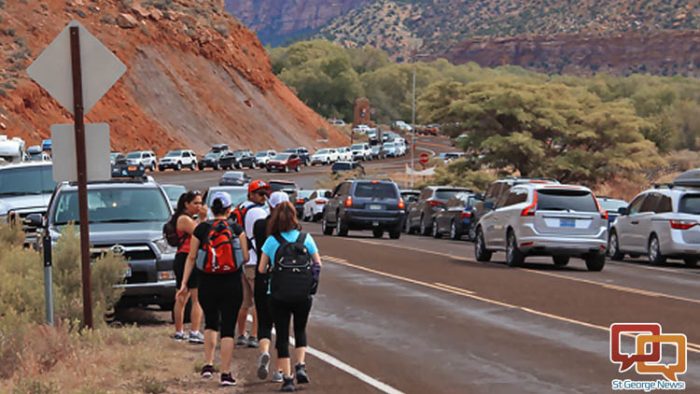
A second large source of imported money to the Greater Zion region is of course tourism. Zion National Park visitation figures are a useful proxy for understanding this part of southwest Utah’s growth story. National Park Service statistics show a significant growth spurt in the 1980s, with annual visitation doubling from about 1 to 2 million over the course of the decade. This was followed by slow, steady growth for two decades until annual visitors numbered around 2 1/2 million. This was followed by another significant growth spurt in the 2010s so that the normal level of visitation is now around 4 1/2 million people per year.
These numbers routinely place Zion among the 5 most-visited national parks in America. Last year, only Yellowstone saw more people. This “anchor tenant” is obviously an economic powerhouse on its own, generating 40% of Utah’s total national park visitation and 33% of its visitor spending. In dollar terms, national park visitors shovel over $250 million a year directly into the Greater Zion economy. The indirect economic impact is far greater.
— — —
With the outline above in mind, bookmark for later the following propositions:
- The existence of an “amenity” in a place is a necessary but insufficient condition for amenity migration. The capacity for move-ins to decouple their economic well-being from the local labor market is also imperative.
- What constitutes an “amenity” is far more subjective than ordinarily presumed. The opportunity for capitalistic manufacture of amenities is nearly endless. But do not expect amenitization’s synthetic flexibility to be evenly or constructively employed. Count on this feature not to ameliorate social problems but to exacerbate them.
- “Amenity migration” is a nice, clean term that implies a more uniform phenomenon than exists in practice. There are certainly commonly observed features, but the differences matter and they are pronounced. One community may grow in more or less normalish ways. Another may not grow its permanent community at all and instead simply become an ever more exclusive enclave of dilettantes and consumers. Most places will fall outside either of these two extreme descriptions.
- It is the epitome of technocratic arrogance to suppose that amenity migratory patterns will readily yield to planning or analysis. Human civilization is more like an organism than a machine; it is complex rather than merely complicated.
— — —
Over the course of 30 years or so, the retirement- and tourism-driven growth cycle has transformed the built environment of southwest Utah from an archipelago of small towns easily identifiable as the descendants of early Mormon settlements into a burgeoning metropolitan area with a very short architectural history. St. George is now a legitimate regional hub. Formerly discrete hamlets like Santa Clara and Hurricane have become suburban bedroom communities.

The twin pillars of healthcare and real estate still comprise a significant share of the “real” regional economy, but opportunity has gradually become thicker and more diversified. In higher ed, for example, both of the public schools — branches of the state university and trade school systems — have grown rapidly, and a private medical school was established in Ivins in 2017. These institutions employ a significant number of faculty and staff who are not dependent for their livelihood on retirees. These schools are also turning out many more skilled workers than in the past and an increasing percentage of them will be able to stick around after graduation.
— — —
With this recent history firmly in mind, it should be easy to guess how the Covid pandemic has affected Greater Zion. Indeed, the most prominent social features of the pandemic are the same things that were driving growth before the pandemic. Essentially, the past year has been an exercise in pouring gasoline on all of the region’s already blazing growth trends.
For years, amenity-driven migration to the region has consisted not just of retirees but also of remote workers who are still in their early or peak earning years but are similarly detached from the local labor market. Another, less clearly defined category of amenity migrant, also growing for years along with the region, consists of workers who are conventionally attached to the local labor market but are willing to pay the so-called “sunshine tax” of marginally reduced economic prospects in exchange for perceived lifestyle benefits.
Then, last spring, essentially overnight, growth in remote work went from an overhyped (if real) trickle to a Zoom-enabled tsunami, in particular for the sort of affluent knowledge workers that have always driven amenity migratory patterns. Overnight, the relatively wide open spaces of places like Greater Zion went from a novelty to wellness imperative for many people. And overnight, long-haul travel was grounded, causing residents of large cities across the West to recalibrate vacation plans toward destinations like Greater Zion.
And so, predictably, those who had the means quickly decamped to second homes. Those who never liked cities to begin with seized the opportunity to hasten their exit to greener, more rural pastures. Locally, I know of more cases than you would guess of people who intended to visit Greater Zion for a week or so last March but ended up staying for months as work and school went online and as local lockdown conditions became more appealing than what they faced back home. A few such Covid refugees have never gone home except to pack a moving van.
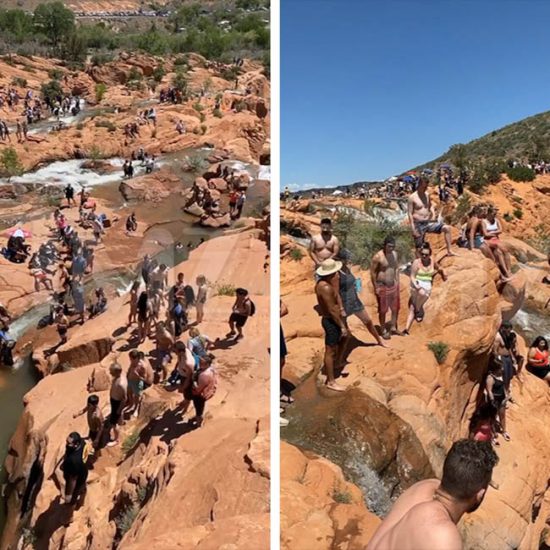
After a brief pause, tourism rebounded and then some. Panic over the widespread closure of the economy in March, felt especially acutely in corners of Greater Zion like Springdale, was quickly forgotten as tourism came roaring back. By the end of summer, Zion was setting new visitation records, recovering so strongly that the park still managed to see nearly 4 million visitors for the year.
Meanwhile, permanent local residents became less inclined to move than under ordinary conditions, causing the resale inventory of homes to plummet from a normal level of around 1,400 to less than 400. This put much more demand pressure on the new construction side of the housing supply, and home construction businesses everywhere have been hobbled by labor shortages and severe supply chain disruptions. As a result, prices have ballooned along with the typical wait time for delivery of a new home.
Altogether, local economic conditions are even more frenzied than just before the financial crisis of 2008. Greater Zion was at the top of last year’s list of metropolitan areas with the most housing starts per capita, despite the aforementioned building constraints and despite last year’s $400k-home becoming this year’s $600k-home. It is becoming common for relatively ordinary Springdale hotel rooms to rent for more than $1,000/night. And it has seemed that for every business that became a Covid casualty in 2020, there are 20 that had their best year ever. Improbably, the region’s blistering rate of pre-Covid growth appears almost sedate in retrospect.
— — —
Coda. Californians*, having ruined their own primary housing markets, are no longer content to export just a bit of their dysfunction onto one rarified second-home destination or another, but instead appear set to entirely wreck any number of housing markets across Texas and the interior West. Let’s dissect the process, using figures from San Mateo County in the Bay Area to help illustrate.
Step one: Create a massive housing gap. “Between 2010 and 2019, 102,500 new jobs were created in San Mateo County, while only 9,494 new housing units were built, a 11:1 ratio.”
Step two: Wait patiently as the extreme imbalance between housing demand and its supply causes home values to become an exercise in absurdity. Between the mid-90s and now, the median home price in San Mateo County skyrocketed from the mid-$300,000s to about $1,700,000, a roughly 5-fold increase.
Step three: Engage in a little harmless arbitrage. Use the internet tools invented in and around San Mateo to remain attached to the Silicon Valley labor market while detaching from its dysfunctional housing market.
Step four: After selecting your Zoom Town of choice, cash out your home equity and reinvest all or most of it in your lucky new hometown. It’s almost like an early-stage investment in an exciting new startup!
Bonus step five: Charm new acquaintances by expressing shocked delight at what a nice house $1 million gets you.
Bonus step six: Continue your old homevoter ways in your new hometown by furiously and without a trace of irony lobbying your local elected officials to clamp down on housing production lest the place “turn into California.”
[* Here, the terms “California” and “Californians” stand for something broader than the named state and its residents. This is an attempt to describe a macro process and I’m simply using these specific labels because they represent the most visible and most clearly distilled example of the phenomena.]
— — —
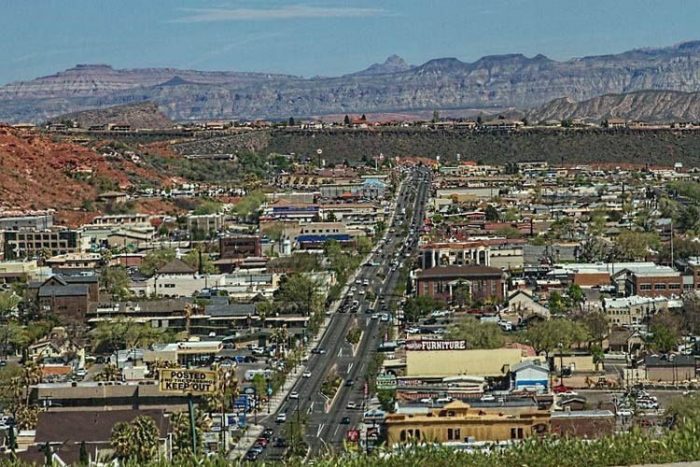
Stacy Young is a regular contributor to the Zephyr. He lives in Southwest Utah.
To comment, scroll to the bottom of the page.
Zephyr Policy: REAL NAMES ONLY on Comments!
Don’t forget about the Zephyr ads! All links are hot!



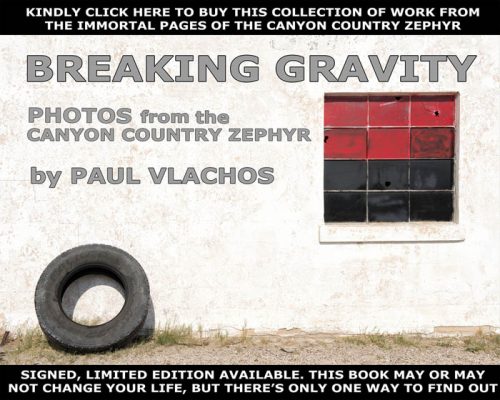
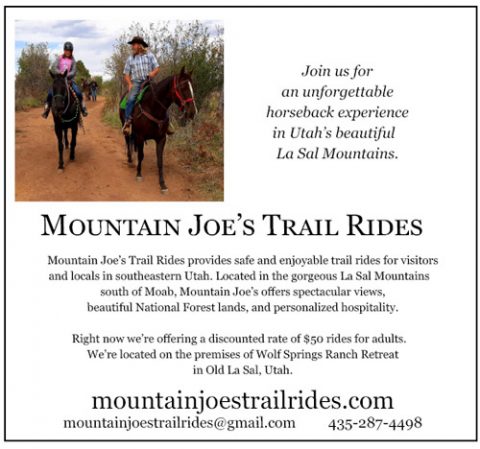

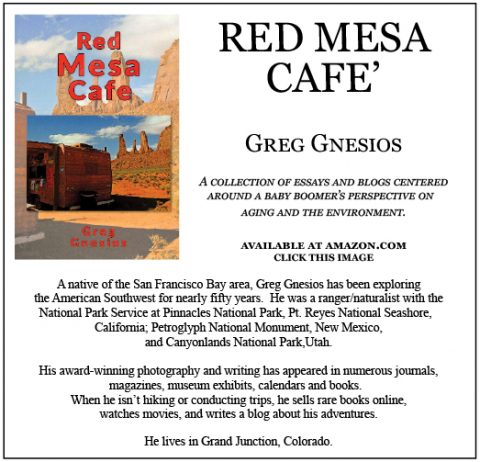

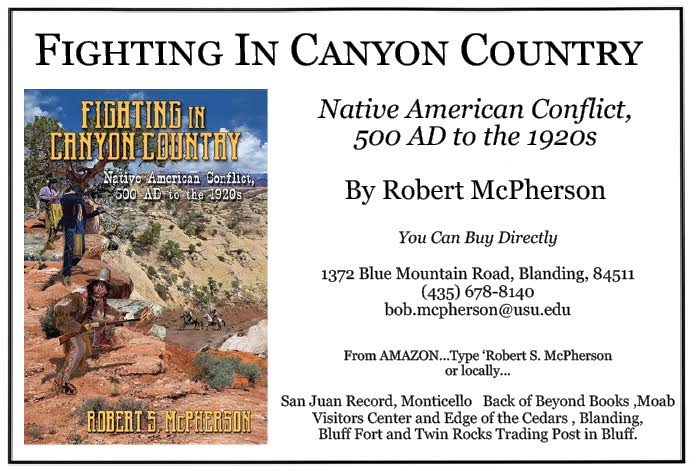
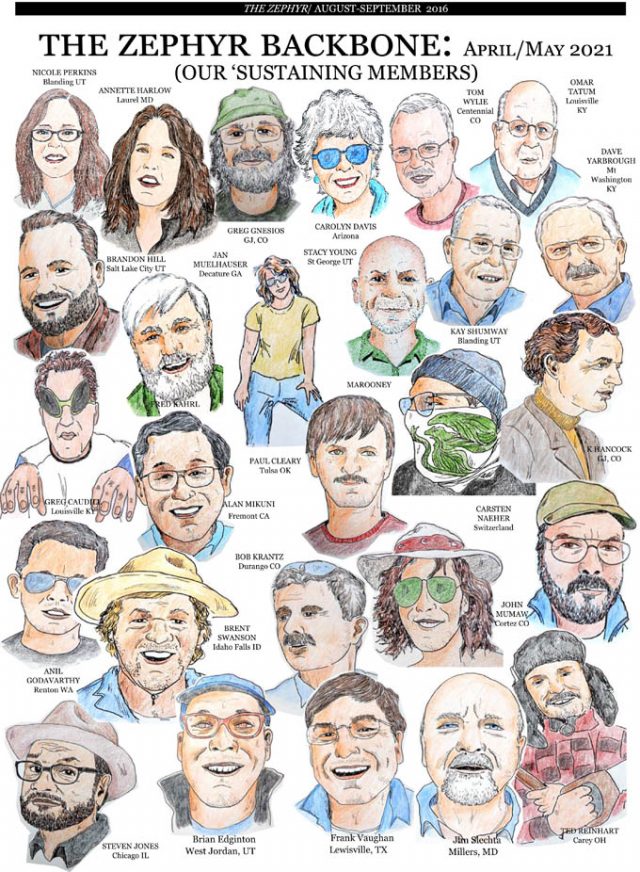
While everything that this article says is true, it’s been said before. People move to small towns, the towns change, and folks bemoan the way things are. It’s like complaining about the weather. People move around. It’s always been that way. There is no heroic bucolic past when St. George, Moab, etc. sat in stasis for centuries upon centuries. The towns aren’t that old and they’ve always been changing.
I appreciate everything that Stacy Young says in this article–it’s well thought out. But it’s time to move on from complaining about the weather. Our energies are better spent making our communities places where people can live good lives.
I have sympathy with your response, John. But I also want to ask: how are things different now? They clearly are: in intensity, scale, pace, degree, etc. But it’s also something that seems structurally different than the old days when people would move “from away,” as they say here in Canada in some places, and change a town. Clearly digital tech has something to do with it; but also, as this piece points out, severe inequality.
As for making out communities places we can live good lives. I agree, that is a huge question and a great one. I think one thing this piece implies is that the solution to that challenge cannot only be local. How is a town in Utah supposed to compete with wealth from California? Or, for that matter, in my current abode of Vancouver, BC, how is the town supposed to deal with foreign capital seeking a place to productively rest (and not just from China as all the xenophobes argue), immigration-driven population growth, and so on? It’s not just a national-level issue; it’s a global one. Thus all the people who say we can build our way out of high home prices ignore the fact that markets are not local. (Paul Krugman is an example of this, always arguing that NYC had to build more housing, and thereby ignoring that there is a near-infinite demand for NY real estate from everywhere other than NYC.)
That said, one clear thing amongst many that a local community could do is zone properly (and stop developers from driving zoning laws) to avoid stupid large yards and low density and auto-centred communities—even, EVEN, in rural or no-longer-rural areas like St. George.
It would be an interesting article to explore things that towns ARE doing to keep themselves liveable and lovely, or to make themselves that once again.
Over the last ten years, I have watched the west I love change. I try to not be angry about these changes. It’s not always easy and it always seems like there’s some new awful revelation to be angry about. Some new “no parking” sign on a dirt road in the mountains, some newly over camped stretch of national forest…the list of awful revelations seems limitless. I try to focus on being grateful that I knew the American West before every desirable corner of it got ‘californicated’. The individual search for solitude in nature doesn’t lend itself to the extremely social process of attempting political solutions. So I keep seeking solitude and trying to be grateful for what I find. I do find it helps to try. Making the effort always helps.
Stacy does an excellent job of tracking the long-term changes to St George and Zion from a broad, vulture’s-eye point of view, and and even better job of deducing from them the dynamics of gerontology and health and real estate markets that drive the changes. It really helps to track histories of areas like this, to see starkly changes that occur so gradually that we often don’t notice them. Only their effects, too late.
The figures on Zion visitation were truly shocking–from 1 or 2 million to 4.5 milion in 30-some years. It is turning into the sacrifice area that Arches has become for some time now. That photo of the entrance to Zion said it all. Thousand dollar hotel rooms.
Stoic resignation may seem the adult way to deal with this transformation. But ignoring the actions of humans just because they’re done on a large supra-human scale by impossibly rich strangers does not absolve any of us once we see the picture Stacy has drawn here. This is both an environmental and cultural disaster, no doubt, but also an economic disaster on a historic scale. The next phase to come in Stacy’s history of St George is the Aspenization of the work force, who cannot afford to live in the place that requires their labor to function. Workers in Aspen must be bussed in for as much as fifty to a hundred miles to keep the floors clean and the food hot. This serfdom is currently coming on a bigger scale to greater metropolitan Denver CO, where working class people are fast becoming unable to afford a reasonably priced, decent place to live, no matter how far they commute. As noted, it has already been happening in places like San Jose and San Francisco. The impacts range from homelessness to endless penury.
This is not NIMBYism, or should not be, however near the risk of becoming so. This is a matter of adults taking responsibility for the culture they create. Capitalism sets fire to culture, then moves on and leaves the remaining locals to live in the ruins. I live in a small town partly because it exists on a humane enough scale that my little voice can matter, if I time it right and say the right things to the right persons. If we really love the American west, we need to preserve some part of it, and not just in some sort of museum with broken pots and barb wire displays, and keep it going. We have to invent the new culture, or newcomers will jerryrig it for us, inspired by the feudal cultures they left behind. Conceding to capitalism’s contagion has been tried in the past too, and it leaves a lotta wreckage.
I can’t save St George. But town by town we are going to have to solve this, and hope that the St Georges follow suit sooner or later. Or we could give up, anesthetize our conscience, maybe make some cash and enjoy what’s left in pockets of wilderness. I’m getting a headache thinking about it. I’m going camping. Bye.
(sigh). fast-forward, multiply the author’s “factors” by, eh, 10, and there you’ll have Grand Junction (COlorawdough) in not so many years …
Or Estes. I’ve lived in Springdale for almost 20 years. It’s horrifying and so so sad. When it first started getting really bad I thought – ok if I have to put up with all these tourists how do I make money off it? I’m just a resident so no way to do that nor do I really want to. Now I say .. how can I just protect myself ?
My take on the amenity economy and industrialized tourism considers how this new commodity compares to what commodities people in western communities used to produce and sell. Once upon a time, small towns in the west were homes to people who farmed, ranched, mined, cut timber, or otherwise derived products from the land. And they could sell those products to millions of other people who lived far away.
Now those millions of customers want a new product, based on personal experience in many of those same areas. But to sell that, the customers have to visit (or live) in those same once-remote lands and formerly small towns. And those visitors can have almost as much impact on the land, while they completely remake the character of the towns.
Figure out a way to sell the experience commodity without the need for the customer to visit the location, and you can have prosperity without the headaches.
As usual a very insightful article. As a resident of Moab for 40 years I’ve seen this disaster play out with a front row seat. I’ve ponder significantly on how this could have been avoided, or how to avoid it in other once pristine “amenities” western towns. I don’t have an answer, at least one that is legal and acceptable under our American economic system! I suppose one can just try and hold on and hope it burns itself out and the amoeba moves on… But it truly sucks the soul right out of the towns it infests.
A good summary, maybe the best thing I have read from Stacy. It is true that planning can’t “save” Southern Utah communities, But think it is important to say here that details are still important and, thus, what good planning can do is still important.
Planning will not take us back to, say, the Moab I first encountered more than 40 years ago (and for which I retain a great fondness despite the changes) nor will it allow my friends in Boulder to continue to hide from the world (though I wish it would). But we should not let our dismay over the changes stop us from supporting good planning. Managing storm water is important (perversely perhaps, more so in arid places). Connecting communities with trails and sidewalks rather than just roads is important. Struggling (and it is a struggle) to provide housing for the workforce is important. We should not let mourning our losses stop us from supporting measures that make these evolving places more habitable while at least softening environmental impacts.
We should also try imagine ways to inject a sense of gratitude (I agree with Evan Cantor about the importance of that), humility, restraint, and reciprocity into the lives of communities where ego is currently running rampant. The Zephyr contributes to that (thanks!), but much more needs to be attempted.
After the King Soopers shooting three weeks ago, I think it will be impossible for us in Boulder to continue hiding from the world…
I know I’m part of the problem-an Easterner who loves the West. But I did try to tread lightly when I was out there. And I support this site and others. However, I’m almost 76 so I’m not going to be around a whole lot longer.Still, my wish is for some of the old west to still be there for others.
We can wish, complain, educate and bemoan till the cows come home (by they way, I’ll take cattle over Instagrammers and airbnb entrepreneurs any day, but it is boots on the ground time, kiddies. It’s time to get our butts to p&z meetings; to create petitions (ugh) to make airbnbs illegal. You know the drill. I really know the drill be cause I live in Flagstaff and have been fighting the Californication of this area for decades.
Our local paper just ran a story on glamping: https://azdailysun.com/news/local/valle-residents-rally-to-change-areas-name-to-grand-canyon-junction/article_61669cc7-adc2-5a36-99d3-081b27363804.html One of my close friends homesteads in that area (think one-room two story cabin, no electricity, no water) and is watching the hordes take over. Yurt and tent owners are getting $180. for an overnight stay with no water, no electricity. And, the urbanites who discover the area on airbnb and other social media sites have NO idea how to camp, mych less sustainably. .
We are not alone: https://www.civilbeat.org/?p=1441488&utm_source=Civil+Beat+Master+List&utm_campaign=9059cd5f74-EMAIL_CAMPAIGN_2021_05_10_07_59&utm_medium=email&utm_term=0_51c2dd3cf3-9059cd5f74-402047990&mc_cid=9059cd5f74&mc_eid=eb71afc092
Oh, please. This is happening all over the country and has been for years. Those with the means will move to the nicer places and as they improve (i.e., gentrify) the neighborhood it increases in value. Guess what? Nicer neighborhoods are worth more than crappy ones. Prices rise, the poor get pushed out, mostly. Some places have subsidized housing, rent control, low income housing. Those create a whole other host of problems. Regardless, you can’t stop the cycle. Get used to it.
It is easy to vilify all Californians, then claim that the term “Californian” is just used as a handy placeholder for all non-native Utahans. Last I looked, we are the United States of America, not the insular Four-Corner States. Utah wanted growth… and they got it. From 2010 to 2020, population in the state grew by 18%, which is #1 in the “nation”. So Utah wants our California travel dollars, but nothing more? You want us to go back home after we pay to ruin our favorite piece of red rock desert. Good luck. Utah politicians and business people made their bed and promoted development at any and all costs. Now they reap both the rewards and the problems of over-development. Don’t blame Californians. Blame yourselves.
Living in Clark Co., NV since 1926, your story is the tip of the iceberg! Now LV does’nt want lawns. All these years we have known we live in a desert. We early settlers saved water even while brushing our teeth! We used dishwater to water what plants (most of the desert variety) we had. (Oh, and I’m not supporting no inside plumbing!) But as the white water mark at Lake Mead denotes, we in Las Vegas are using lots of water! The 75 year old Flamingo has 3500 rooms now. New hotels are a-building!; What needs to be done, but won’t, is for elected officials to learn to say NO to 400 house new housing tracts or further resorts! It’s a no brainer!
Ed Abbey (as usual) put ity best a long time ago: “But O my desert, yours is the death I cannot bear:.
Another comment, if I may. Yes, in the abstract, I, along with Ed, lament the urbanization of the beloved rural West of my childhood. BUT….in the real world….if I lived in a place where “smash’n’grabs” and “follow-home robberies” and “drive-bys” were the latest social fads, I know I’d be longing for safer and greener pastures….